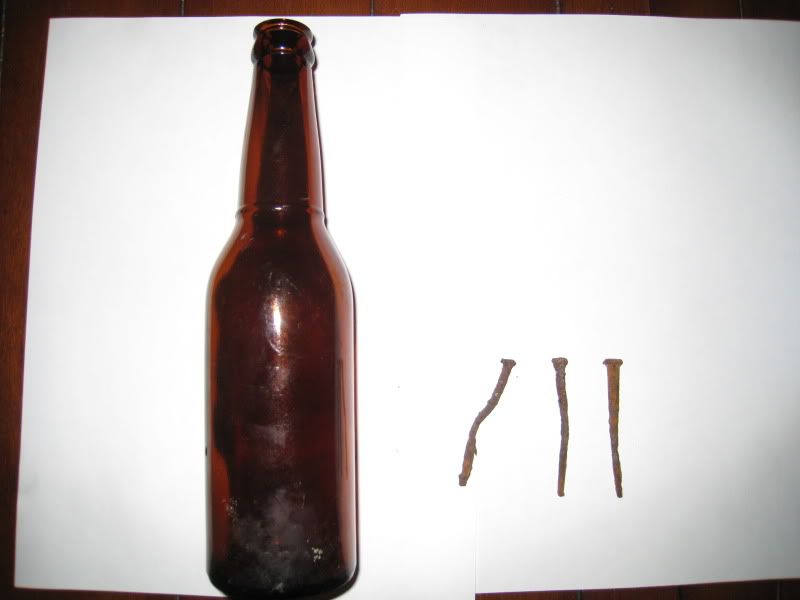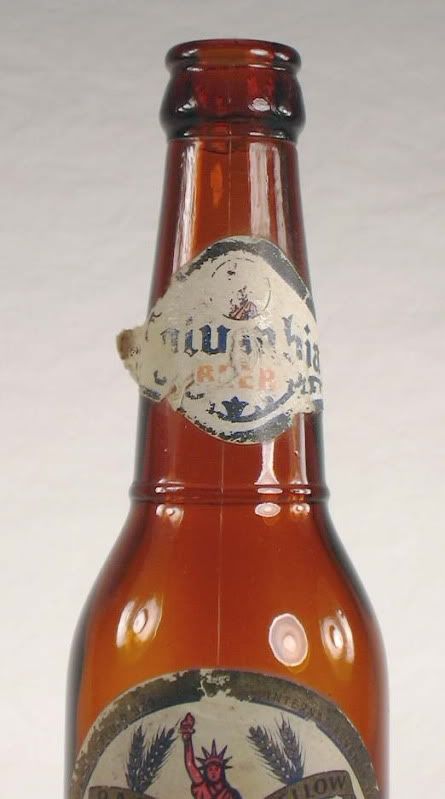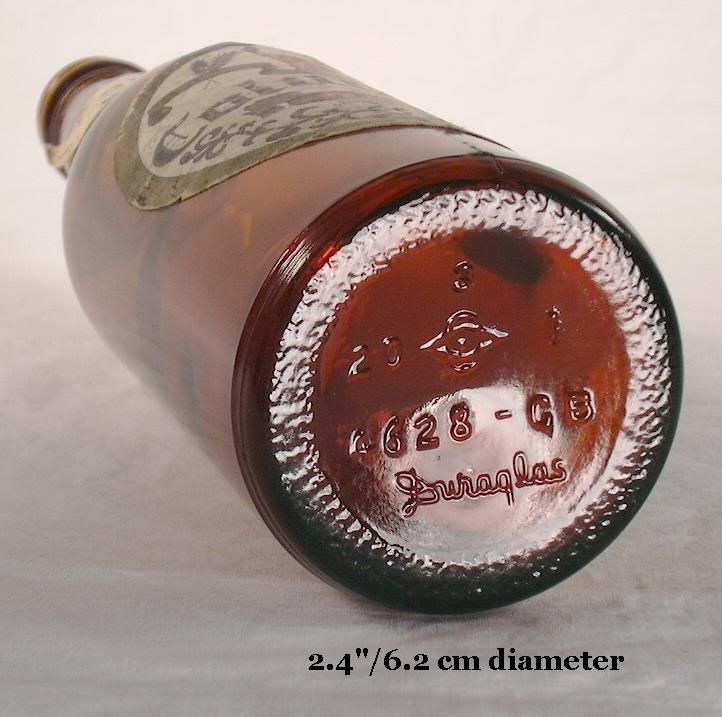Okay people, the remodeling continues.
Today among many of my various projects I am doing, I began to put new sub flooring in the Bathroom addition.
To my joyous surprise I found dry rot in the joists.
Now this will not be a before/after update, because that will come later.
What I did find of interest while practicing my contortionism under the house was something shiny.
I decided to reward myself from all the work I had been doing and dig it up.
Now here's some background info on our area. At the turn of the 20th century most of my entire 12 block historic district was a landfill. Whats cool about this is after 1910-20's homes were moved here. My home was built in 1886 and later moved here on top of the old landfill.
Whats fun about living on an antique landfill you say? Well stuff constantly resurfaces from Chinese immigrant workers and locals and anything you could think of that might have been trash then.
Over the years I have found blue willow china, opium bottles and random trinkets.
What I found today I thought was going to be a turn of the century "something" So I was all excited, love playing Victorian archeologist.
What it turned out to be was a beer bottle. Next to the beer bottle was a hammer, that fell apart in my hands, and a handful of square nails.

I found the last construction guy's beer. He must have gotten so hammered that he forgot his tools, and beer then floor got sealed up.
So I dug it up, cleaned it in the sink and decided to look up the markings. on the bottom.
It has the number 20 on one side, a weird symbol in the middle and a number one on the other side.
Underneath that it says "Duraglas"


So I looked up "duraglas"
and heres what I found.
Quote:
|
Click on the following links to view more images of the bottle to the right: base view showing the makers markings with the "20" being the plant code (Oakland, CA. which began operation in 1946) and the "1" being the year date for 1951; close-up of the shoulder, neck, and finish (Toulouse 1971; Lockhart 200d). The base is also embossed with DURAGLAS which was used the company from 1940 to at least 1954 (Miller & Morin 2004). See the machine-made bottle dating page Question #11 for more information on the dating of this particular bottle. This style of export beer with a narrow lower ring neck was commonly produced from just after the repeal of National Prohibition in 1933 to the early/mid 1950s by numerous glass producers (empirical observations).
|
Quote:
The "Diamond O-I" makers mark of the Owens-Illinois Glass Co. is shown in the picture within the white box (click to enlarge). This mark is also called the "Saturn" mark by some due to its stylized resemblance. (Note: The "O" in the Diamond O-I marking is actually a vertically elongated oval, although referred to here as an "O" for simplicity.) This makers mark is very common on bottles made during the 1929-1930 to 1954 period as the company was (and still is) a dominant force in the bottle production world at that time (Toulouse 1971; Lockhart 2004d).
These Owens-Illinois markings provide an opportunity to also identify which plant made the bottle and in what year. More specifically for the pictured export beer bottle, the script Duraglas marking and the stippling (molded "roughness") around the edge of the base were both first used in 1940, so this bottle can date no earlier than that. The "1" (without a period) to the right of Diamond O-I mark is the year marking and in this case can be no earlier than 1941 because of the Duraglas and stippling. In the early 1940s, it was realized that single digit date codes were repeating (i.e., "0" could be 1930 or 1940) so a period was added after most (but apparently not all) bottles from about that time to the mid-1940s when two digit year numbers were used on many bottles - in particular beer, soda and milk bottles. Unfortunately, the use of the one and two digit date codes was inconsistently used by different plants and mold makers. For example, the illustrated bottle had to have been made in 1951 since the "20" to the left of the Diamond O-I mark is the code for the Oakland, CA. plant which did not begin operations until 1946. This bottle is an example of a single digit date code without a period being from the 1950s, though many of the Owens-Illinois beer (and soda & milk) bottles do have the two digit date codes at that time. This is also an example of how even with relatively ample amount of information Owens-Illinois bottle bases provide, one must still rely on more than one piece of data (i.e., plant and brewery dates of operation/business) to ensure a reliable date or date range determination (Toulouse 1971; Lockhart 2004d; Phil Perry, O-I engineer pers. comm. 2007; Lockhart pers. comm. 2007).
Between 1954 and about 1959 the Owens-Illinois Glass Co. changed the Diamond O-I marking to a simpler "I in an O" mark (same basic mark minus the elongated diamond) although the time of this change varied through the noted period depending on the specific plant, mold life, and possibly bottle type. The base image to the right is of this newer mark on a bottle made at plant #21 (Portland, OR.) in 1960 - the first year of operation for the Portland plant (Toulouse 1971; Girade 1989; Lockhart 2004d). Date codes with this later mark (still in use today) are variable with both single and double digit codes (like in the image) observed, though recently made beer bottles (1990s and later) seem to consistently have two digit codes (empirical observations).
|
Beer & Ale Bottles
Machine Made Dating



I have a beer bottle from 1951 that was made in Oakland, California and bottled in Tacoma, Washington, and drank and forgotten underneath my house during remodeling with the last guy in Salem, Oregon that was found by me 58 years later.
What I'm really trying to figure out is why a guy in 1951 was using square nails. The only thing I can think of is they were being resourceful and reusing nails, or had a bunch left over from years past they decided to use.
I thought it was pretty cool history, so I thought I would share.
